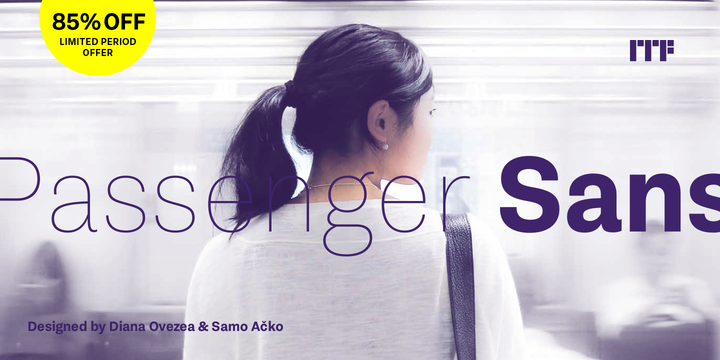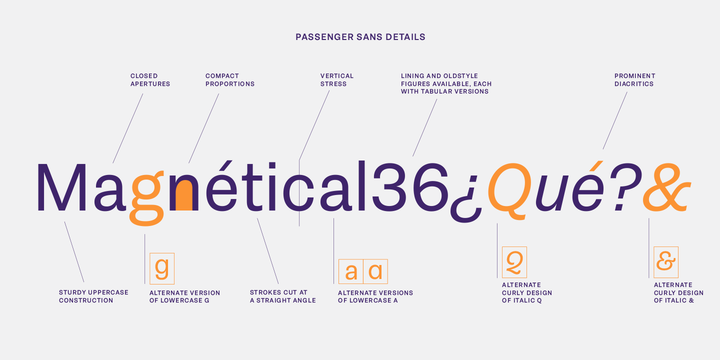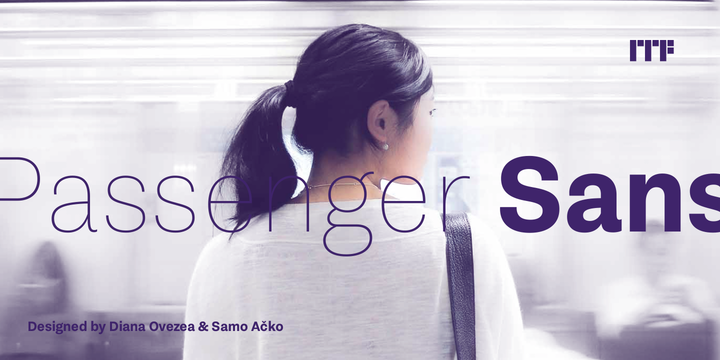
Passenger Sans is a large family designed for editorial projects. You can build great design systems using just its fonts, or you could combine them with two related ITF families: Passenger Serif and Passenger Display. Passenger Sans’s letterforms have compact proportions; their apertures are small. In the upright fonts, all strokes end at horizontal or vertical angles. Long passages of text set in the typeface are comfortable to read. Passenger Sans’s fonts have are proportionally-spaced lining figures as the default numerals, but with OpenType features, oldstyle figures and tabular figures are also available. In the upright fonts, the ‘a’ and the ‘g’ are double-storied, while in the italics they’re single-storied – the ‘opposite’ version is always available as an OpenType alternate. Fonts have alternate forms of ‘Q’ and the ampersand (&) as well.

